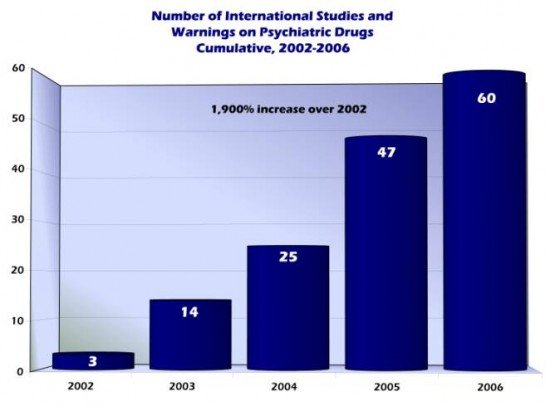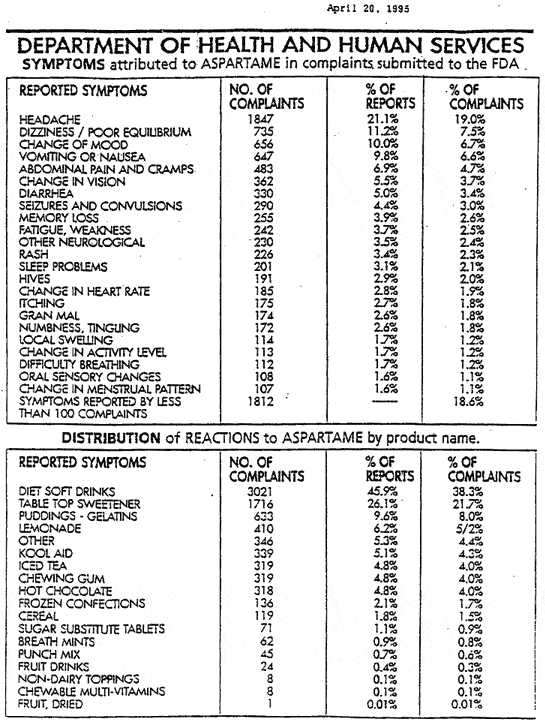Peter Suderman from the October 2010 issue
At the tail end of December 2009, as negotiations on the final Senate version of the health care overhaul were being completed, David Paterson, the Democratic governor of New York, held a joint press conference with independent New York City Mayor Michael Bloomberg in which they declared their unified opposition to ObamaCare. The legislation, they warned, would cost the state $1 billion, threaten the continued operation of many hospitals and nursing homes, and force the city to close 100 clinics. Bloomberg told the New York Daily News the law was “a disgrace.” A bitter Paterson groused that he felt like his state was being “punished.”
State politicians from the GOP were no less upset. A few days earlier, Mississippi Gov. Haley Barbour, president of the Republican Governors Association, had chided the Senate for “poor policy” and warned that the bill’s unfunded mandates “would necessarily cause states to raise taxes or cut vital services like education and law enforcement.”
Three months later, the fiscal punishment that both Paterson and Barbour feared was signed into law. Thanks to the unexpected election of GOP upstart Scott Brown to Teddy Kennedy’s old seat in the Senate, which left Democrats for the first time during the Obama administration without a filibuster-proof majority in the upper body—and thus without the ability to pass a revised version of the bill—the House chose to swallow hard and pass the Senate legislation unchanged, making only limited modifications in a follow-up reconciliation bill.
Much of the language that passed into law was never intended to be final; it was more like beta software. Most of the important elements the authors had intended to include were there, but not always in the final intended form. And the code was still crawling with bugs, particularly on the level of implementation: at the states.
But Democrats had heard the call of history, as their Progressive leadership saw the opportunity to promote their agenda toward Socialism. Passing any bill—even a creaky, obviously flawed beta version—was better, party leaders decided, than declaring defeat so tantalizingly close to the finish line. And so, on March 23, 2010, President Barack Obama stepped up to a White House podium to memorialize the signing of the Patient Protection and Affordable Care Act.
As he did, Vice President Joe Biden leaned over and whispered, near a still-hot microphone, “This is a big fucking deal.” As with all the best political gaffes, Biden’s slip of the tongue revealed the truth. ObamaCare dramatically increases state Medicaid burdens at a time when local budgets are in deep crisis, asks states to participate in a woefully underfunded bridge insurance program, and pushes state governments to set up complex health care “exchanges” that must be designed and run according to the administration’s standards—standards it has yet to define and can change at whim. The law is a big deal in every way, and the first institutions to absorb the shock are state governments. That’s why so many have already begun to resist.
Risky Business
In the middle of 2009, as congressional Democrats began to dig in on ObamaCare, they ran into a cost problem—or, more precisely, a political problem caused by estimated costs. Early drafts of the legislation had racked up Congressional Budget Office scores well north of $1 trillion, and the unheard-of price tag provoked an immediate backlash. By September, President Obama was promising the legislation would come in at “around $900 billion.”
In order to meet that promise, the law’s authors loaded the bill with budgeting gimmicks that made its first-decade top-line cost appear lower. (See “The Lie of Fiscal Responsibility,” June 2010.) One of those gimmicks was to delay the bulk of the law’s new benefits—and thus the bulk of its spending—until 2014. That meant the CBO’s traditional 10-year score, which covered 2010–19, accounted for only six years of spending.
It also meant that three and a half years would pass before the new, broad-based insurance subsidies kicked in and key new regulations took effect. That three-and-a-half-year gap translates into a three-and-a-half-year political nightmare for members of Congress intent on proving that the law is bringing immediate benefits to their constituents. Legislators therefore told states to immediately establish a network of new high-risk pools—state-run insurance options for those who might otherwise have trouble getting insurance due to various risk factors. Invariably, these pools will be populated by the least healthy, and thus the most expensive to insure. Yet ObamaCare also requires these pools to charge standard market rates, meaning they will require significant public subsidies. And the law provides just $5 billion in such funding.
In June, Richard Foster, Medicare’s chief actuary, told The New York Times that the $5 billion will run dry as early as 2011. A report from the union-automaker-backed National Institute for Health Care Reform and the Center for Studying Health System Change*, a non-partisan health care organization that conducts original health care research, projects that as many as 7 million individuals will qualify for the new plan. According to that report, there is enough funding to cover only about 200,000 of those people, or less than 3 percent. As a result, the center concluded, the program “could leave hundreds of thousands of potential participants with serious medical problems unable to obtain coverage.”
ObamaCare leaves states on the hook for the rest of the tab. On a conference call in early May, officials from the Department of Health and Human Services (HHS) reportedly tried to reassure state officials that they wouldn’t be stuck with the bill. But the HHS has yet to say where the extra money will come from. Against this grim backdrop, 21 states have refused to operate the new insurance pools, leaving their setup and operation to the federal government instead.
In part, states are balking at the idea of being micromanaged by the feds, telling Washington to do the job itself if it can’t butt out of the process. In the words of Grace-Marie Turner, president of the Galen Institute, a nonprofit health care research organization that advocates free-market solutions, “You basically have the states running something in which the federal government is telling them what to run.” The rebellion is also a reaction to the complexity and difficulty of the job. As William A. Hazel Jr., Virginia’s secretary of health and human resources, told The Washington Post in May, building a high-risk pool is “an enormously complicated undertaking.”
But to judge from the letters state officials have sent to HHS Secretary Kathleen Sebelius, the biggest complaint is cost. In one letter, Georgia State Insurance Commissioner John Oxendine wrote, “I am concerned that the high risk pool program will ultimately become the financialresponsibility of Georgians in the form of an unfunded mandate.” Virginia Gov. Robert F. McDonnell wrote that his state would not participate because the money allocated to fund the program in his state would be used up in just 22 months.
With its high-risk “bridge” pools, Obama-Care has indeed created a bridge—to nowhere.
Washington’s Way
The administration’s bridge program may be rickety and unfinished, but it’s only a temporary concern. Eventually 2014 will roll around, and by that point the high-risk pools will no longer be the focus, because states will have been pushed to design and erect exchanges—complexhealth insurance marketplaces through which individuals can purchase subsidized coverage.
In the fight over ObamaCare, Democrats failed to pass an explicitly government-run insuranceoption. But with the exchanges, they’ve done the next best thing by creating what is effectively a network of herding pens for insurers. Rather than run the insurance plans directly, states will corral all of their insurance providers into a government-run, highly regulated marketplace, telling plan providers what to do and how to do it.
But insurers won’t be the only ones subject to government marching orders. Although the exchanges will be operated at the state level, state governments won’t really be in charge. Starting in 2014, HHS will have the authority to determine, via regulations that govern the exchanges, the minimumhealth insurance requirements for most medical services and providers as well as cost-sharing details.
With greater power comes greater bureaucracy. According to a June report in The Washington Post, HHS will have to hire hundreds of additional staffers to shoulder its new responsibilities. The department needs brainpower as well as manpower: As it stands, the administration doesn’t have the necessary expertise to carry out its new duties. Edmund Haislmaier, an analyst at the conservative Heritage Foundation, points out that HHS “doesn’t know how to do any of this. The federalgovernment doesn’t have any experience running insurance regulations.” Prior to the passage of ObamaCare, that job was left largely to the states, who were given the freedom to regulate—or not—at their discretion. But no more. Essentially, explains the Galen Institute’s Turner, the law forces states to become contractors to the federal government. “States will not be able to do it their way,” she says. “They’ll have to do it Washington’s way.”
But what is Washington’s way? As it stands, no one seems to know. When it comes to exchange design, “the state of play right now is confusion,” says Michael Cannon, the director of health policystudies at the libertarian Cato Institute. One reason for that confusion is that HHS has already been slow to make rules, missing several early deadlines. Nor is the agency’s track record likely to improve any time soon. In June, Michael Leavitt, HHS secretary under George W. Bush, told ABC News that “the average rule takes 18 months, which means that there are many of those that take two or three years to do, because they have controversy or they require integration with some other rulemaking process.” By June, HHS had already missed multiple early implementation deadlines. Given the volume, complexity, and controversial nature of the new system, it’s a good bet that many of the regulations will continue to be established at a slower pace than planned.
Still, there are clues to what the exchanges will require. The Congressional Budget Office estimates that 24 million Americans will eventually get health insurance through the exchanges, including 8 million who will be shifted out of their current private insurance plans. Many of those insurance purchases will be subsidized based on income. Doling out a new set of subsidies on that scale will require a massive new means-testing infrastructure. According to James Capretta, who served in the second Bush administration as the top budget official for health care, Social Security, education, and welfare programs, “the expectation is that these exchanges are able to do real-time income tests on people.”
Verifying eligibility for these subsidies means developing a rapid-response welfare apparatus that has the ability to instantly create detailed, accurate applicant profiles. “These exchanges will have to verify someone’s eligibility for the exchange,” says the Cato Institute’s Cannon. “They’ll have to verify family size and income. They’ll also have to determine if this person is a smoker. And they’ll have to determine where they live, exactly.”
Fast, accurate income verification presents a particularly serious difficulty. For one thing, ObamaCare requires subsidies to be based on family income, not individual income. So the process will have to include multiple family income streams, which means the government will have to check spousal salaries when determining eligibility. Tax returns are the most obvious verification method, but tax returns reveal only what someone made last year. They don’t reflect the mid-year shifts that ObamaCare was intended to address, such as job losses that mean people can no longer obtain insurance through their employers and are newly eligible for subsidies. Yet states will have to create systems to account for such changes. “States are supposed to have data systems in place that can figure out this person’s income and if they’re qualified for federal subsidies and then apply that federal subsidy quickly to the plan of their choosing,” Capretta says. “That is a monumental undertaking. I don’t think anyone has any earthly idea how this is going to happen.”
ObamaCare’s defenders might point to Massachusetts as a model, noting that the Bay State has run a similar insurance exchange since 2006. But Capretta argues that the challenge under the federal system is far greater than anything faced by designers in Boston. For one thing, he notes, the number of people in the Massachusetts exchange is “teeny tiny”—only about 163,000, according to the health policy–focused Kaiser Family Foundation—compared to the millions who are expected to be enrolled nationwide. Furthermore, Massachusetts has relatively few small employers. “Any state that has a huge number of small employers and individual entrepreneurs and small businesses,” Capretta says, is “going to have floods of people into these exchanges.”
In the long run, the biggest potential problem is that the CBO may have underestimated the number of people who will enroll in the exchanges. “CBO says 24 million,” Capretta says. “But it could be three times that.” And, he predicts, “it will almost certainly expand over time.”
The Ever-Growing Burden
One thing guaranteed to expand over time is the Medicaid burden on states. The program, which relies on a combination of state and federal funds to provide bargain-basement health insurance to the poor, already represents a big share of state budgets: In 2009, according to the National Association of State Budget Officers, it accounted for 21 percent of total state spending.
Federal funds are matched to state spending, with exact amounts varying by jurisdiction. Prior to the passage of ObamaCare, many states were already struggling to pay their share, even before the recent recession began. In 2003, 23 states faced Medicaid funding shortfalls, and 18 fell short in 2004. In 2008 average state enrollment in Medicaid grew 50 percent faster than expected, and two-thirds of states cut or froze the program’s provider payments. Next year, 30 states are expected to face Medicaid-related shortfalls.
Because federal funding has been pegged to state dollars, cuts—much less large-scale reforms —have been almost impossible. What politician wants to give up two dollars of constituent benefits—especially health benefits—to achieve one dollar in budget cuts?
A massive medical overhaul may have been an opportunity to address Medicaid’s structural problems. Yet rather than reform the struggling program, ObamaCare’s authors decided to double down on it. Starting in 2014, all states will have to expand Medicaid eligibility, allowing into the program any individual who makes less than 133 percent of the federal poverty line. That’s 16 million new enrollees, or half of the total number of newly insured, according to Congressional Budget Office estimates. The largest group will be nonelderly, nondisabled adults without dependent children.
To cajole state lawmakers into expanding a program that was already straining their budgets, ObamaCare’s authors offered them a classic salesman’s deal: no money down and no payments for the first three years. From 2014 through 2016, the federal government will pick up the full cost of the mandatory coverage expansion. For the four years afterward, states will pick up a rising share of the tab, leveling off at 10 percent in 2020. It’s essentially a federal-match teaser rate, designed to grease the wheels for political acceptance by delaying the pain.
Given the fact that even in the long term the federal government will still be covering 90 percent of the total bill, you might think the states would welcome an easy cash infusion. But the burden of Medicaid is already so high, and state budgets—most of which are constrained by balanced budget requirements and thus cannot rely on deficit spending—are in such dismal shape, that any additional expenses represent a significant fiscal burden. Florida, for example, is already spending $18 billion a year on Medicaid. ObamaCare will add another $1 billion to the tab by 2019. In Arizona the program is seen as fiscally toxic. Monica Coury, a senior staffer at the Arizona bureaucracy that oversees the state’s Medicaid program, told The Wall Street Journal in July: “We have federal partners talking about expansion of this program. And at the state level, we’re looking at a program that we can’t sustain.” Overall, paying for the added benefits will cost states $21.5 billion by 2020.
Moreover, like so many sales pitches, this one comes with hidden costs; the initial “free” years aren’t actually free. For starters, the law prohibits states from tightening Medicaid eligibility requirements—a typical way to save money during a budget crunch. ObamaCare also fails to cover the administrative costs associated with implementing and running the Medicaid expansion. Heritage’s Haislmaier and his colleague Brian Blase estimate that the extra overhead alone will add nearly $12 billion to the total tab between 2014 and 2020, putting the total additional state burden up to $33.5 billion over the next decade.
Nor does the law cover the cost of expanding coverage to those who qualified for Medicaid prior to 2014 but failed to sign up. Nationwide, the Kaiser Family Foundation estimates, nearly 11 million individuals are currently eligible for Medicaid but aren’t enrolled. Many of those individuals are likely to claim their new benefits thanks to what health care experts call the “woodwork effect,” in which people who were hiding out from the previous system suddenly appear when new goodies get added. Most benefit programs fail to capture all eligible individuals, but the greater the benefits offered, the more people show up to take them. And given that individuals who remain uninsured face a yearly penalty, the incentive to collect will likely be stronger than usual.
The law also creates the potential for significant future fiscal headaches by funding temporary pay boosts for doctors who see Medicaid patients. In 2013 and 2014, the law jacks up Medicaid reimbursement rates, which typically run far lower than what health care providers normally charge, to match Medicare rates. But temporary funding is rarely temporary, especially when it comes to health care, where both state and federal politicians, not to mention health care providers, are loathe to accept even long-planned cuts. Each year since 2003, for example, Congress has declined to allow legally mandated cuts to doctors’ Medicare payments, choosing to hike spending “temporarily” instead. And in June, several states launched a panicked last-minute lobbying spree when Congress threatened to end a temporary boost in Medicaid funding provided by last year’s stimulus bill. In many states, then, it’s likely that ObamaCare’s two-year Medicaid reimbursement hike will become an ongoing unfunded mandate.
Medicaid Dropouts?
In response to the bill’s passage, twenty states, led by Florida Attorney General Bill McCollum, have filed suit against ObamaCare, charging that both its individual insurance mandate and its mountain-sized Medicaid burden are unconstitutional. And Virginia, which prior to Obama-Care’s passage put a law on its books banning health insurance purchase requirements—one of ObamaCare’s key provisions—has filed a separate suit. If successful, the lawsuits could effectively dismantle ObamaCare, but nearly all constitutional scholars, even those supportive of the states, believe the challenges face long odds.
Another option might be for states to ignore federal insurance market guidelines and develop noncompliant exchanges. The idea would be to set up an insurance market that meets local needs, disregarding Washington’s rules, then dare the administration to tinker with an effective locally designed exchange. Doing so, argue Haislmaier and Blase, would “make it politically more difficult for federal officials to implement provisions of the new federal legislation…that will drive up premiums and reduce coverage choices.”
The problem with this plan is that setting up an effective exchange isn’t as easy as it sounds. Massachusetts built an exchange in 2006. But since then, the state has had to deal with constant premium hikes, provider shortages, and legal battles between insurers and state officials. And even if a state built a better system, there’s no guarantee that the administration wouldn’t simply force state officials to comply with the federal regs. In the end, the existence of a government-designed insurance infrastructure, even one crafted to local specifications, makes it significantly easier for the federal government to assert control.
At any rate, neither of those responses would pay off for years. In the meantime, states will have to consider their own bottom lines. Given the heavy burden that ObamaCare places on many states’ finances, some policy experts now believe that the best way to protect budgets may be to drop out of Medicaid entirely. This step would not only rid states of the duty to expand Medicaid; it would free them from what is now their biggest single budgetary obligation.
Politically, this may be a tough sell, but legally there’s little to stop a state from killing the program. Despite the perception that Medicaid is an established part of the entitlement firmament, the program is technically voluntary. Any state willing to give up the federal contribution could close down its program. And thanks to ObamaCare, if a state dropped out after 2014, its poor residents wouldn’t lose access to health coverage; instead, low-income individuals would qualify for subsidized health insurance through the new exchanges, which would still be set up even if a state stopped participating in Medicaid. Indeed, such a system may prove more beneficial for the poor. Medicaid recipients have some of the worst health outcomes in the country; their cancer survival rates, for example, are no better than those of the uninsured. And because of the program’s low reimbursement rates, many health care providers won’t take Medicaid patients. Subsidized private insurance could expand health care options for low-income individuals, improving their health outcomes. That makes it difficult to argue that dropping out of Medicaid would hurt the poor.
State budgets would almost certainly be healthier if they did, at least when judged as independent entities. According to a 2009 report coauthored by Heritage’s Haislmaier and former Medicaid chief Dennis Smith, the collective savings would add up to $725 billion by 2019, based on extrapolations from historical Medicaid spending data. California would save $13.7 billion in the first year alone. Indeed, nearly every state would benefit: By Haislmaier’s most recent estimates, which rely on a combination of Census data and estimates from the Centers for Medicare and Medicaid Services, which administrates Medicaid, 40 states and the District of Columbia would be better off shifting their Medicaid recipients off of their books and onto subsidized federal insurance rolls.
“A lot of states might find this very attractive,” says John Goodman, a frequent contributor to the journal Health Affairs and the CEO of the National Center for Policy Analysis, a Texas-based free market think tank. “They get to get rid of a program that was going to cost them lots of money.” But he cautions that if every state did it, the total taxpayer burden associated with ObamaCare would increase significantly, perhaps even double.
It’s not much of a choice, but it’s one that state governments will soon have to make. As both liberal and conservative governors around the country are realizing, ObamaCare is a bigger deal than even Joe Biden imagined.
Peter Suderman (peter.suderman@reason.com) is an associate editor at reason.
*Editor's Note: This article originally identified the Center for Studying Health System Change as the Center for Studying Health Care Change. The article has also been updated to clarify that the National Institute for Health Care Reform and the Center for Studying Health System Change issued a single report.
Related:
Repeal and Replace
After reading the two articles above it becomes even more evident that ObamaCare must go. We must continue fighting in the courts and defunding it in Congress until it can be repealed in its entirety and we can begin a ‘National Discussion’ for real healthcare reform for the good of the people and the country, instead of the Progressive Agenda and the Insurance companies.
If we can repeal the mandate for everyone to have to buy insurance or pay a fee, plus defund the portions they can through Congress… ObamaCare will implode and start falling apart… THITW














